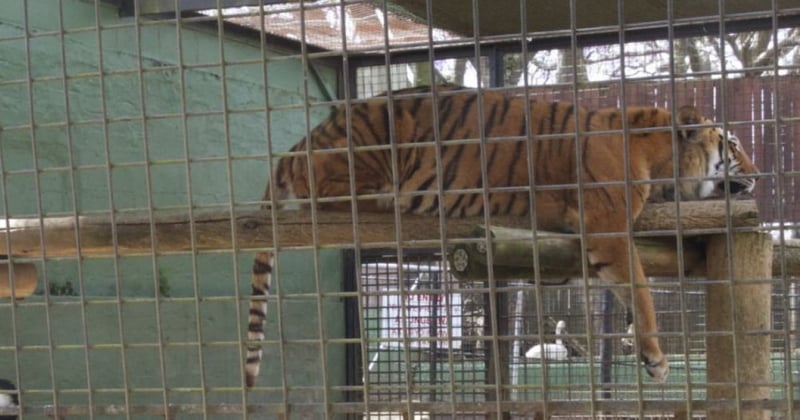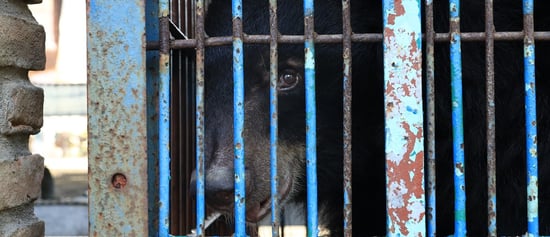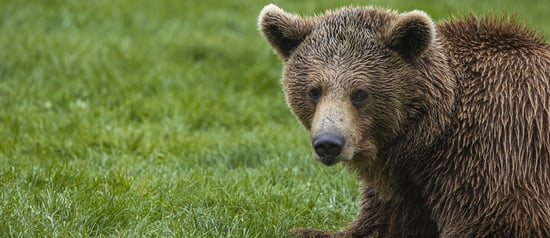
Nowhere's safe for the last of our big cats
News
There’s a roaring trade in big cats being used for traditional Asian medicine, and it’s clawing its way across the globe.
Traditional medicine
Plant-based traditional medicine has been used for many years, and will no doubt continue to be used for many more. Many herbal remedies are known to have curative properties and are popular with many communities around the world.
Having the choice to decide which treatment is right for you can only be a good thing – except when wildlife is involved.
It is estimated that the traditional Asian medicine industry is worth upwards from $50 to $1201 billion globally. Last year, the World Health Organisation (WHO), endorsed the practice of traditional despite a surge of criticism.
Sadly, some of the traditional practices exploit wild animals, cause immense suffering, and are bringing numerous species to the brink of extinction despite little evidence to support its medicinal properties.
The sinister side of tradition
Traditional Asian medicine is based on an entirely different concept to modern medicine, and, with about 2,000 years of history, is of immense importance to many people.
Most remedies don’t contain wild animal products, and often are entirely non-animal based, but there are some that do, and the cost to wildlife is unimaginable. Lions, tigers and other big cats are being poached and even farmed for their bones
This is completely unnecessary; there are synthetic and plant-based alternatives available for the ailments these products are being consumed for.
The global threat to big cats
Big cat numbers have been freefalling into oblivion over the last century. Wild tigers are just shy of 4,000. For lions, there’s about 20,000 left in the wild – down from about 200,000 a century ago.
Habitat loss, hunting and human wildlife conflicts are the main drivers of these declines, but another threat is the growing market for their body parts. Now that demand is outstripping supply in Asia, it has become a global issue.
 Image credit: Anonymous/Blood Lions
Image credit: Anonymous/Blood Lions
Lions in South Africa
In South Africa, lion cubs are used for petting and ‘walking with lions’ experiences at tourist venues. When they get too big, they are used for ‘canned hunting’ – where hunters pay large sums of money for a guaranteed kill as the lions are trapped.
Their bones are then harvested and exported to Asia, which is legal in South Africa. In 2018, South Africa exported 1,500 lion skeletons.
Tigers in China
In China, it’s thought there’s over 6,000 tigers in factory style farms – more than the wild population. They are kept in cramped, barren concrete enclosures, unable to behave naturally, suffering physically and mentally.
Some are kept in entertainment facilities and forced to perform tricks for tourists, who then drink the tonics and wines made from their ancestors’ bones. This is exploitation at its greediest, and cruellest.
Big cat farms don't save wildlife
There is a misguided belief that big cat farms ease the pressure on wild populations. However, our latest study showed that there is a clear preference for big cat products from wild cats over farmed, with almost nine in ten Vietnamese, and over half of Chinese consumers confirming.
So, farms are not only cruel and legitimise a practice that should be phased out, but are also fuelling the popularity of these products, and ultimately the poaching of more wild animals.
An uphill battle
We are doing all we can to save these animals, but it’s an uphill battle. Consider that 25 years ago, China banned all domestic trade of rhino horns and tiger bones, throwing these incredible animals a much-needed lifeline.
But at the end of last year, the ban was lifted to allow the use for medical treatment of farmed tiger parts, which would undo years of progress. Although this has been put hold, we’re concerned that it’s a temporary measure.
Wildlife. Not medicine
Regardless of whether they are taken from the rainforests of South America, the plains of Africa, or farmed in China – big cats are wildlife, not medicine.
For us, our supporters and no doubt, many others, it’s clear that these incredible animals deserve a life worth living and belong in the wild.
We need to speak up for these animals, who themselves, do not have a voice. We need to move the world to act now and protect these animals, because time is running out.
Top Image credit: Anonymous/Blood Lions
Big cat farms don't save wildlife
Traditional medicine
Every year, thousands of animals are bred in captivity or snatched from the wild to fuel the traditional medicine market.
Our work
We're working in Australia and around the world to end the needless suffering of animals by inspiring people to change animals’ lives for the better.
 Image credit: Anonymous/Blood Lions
Image credit: Anonymous/Blood Lions

